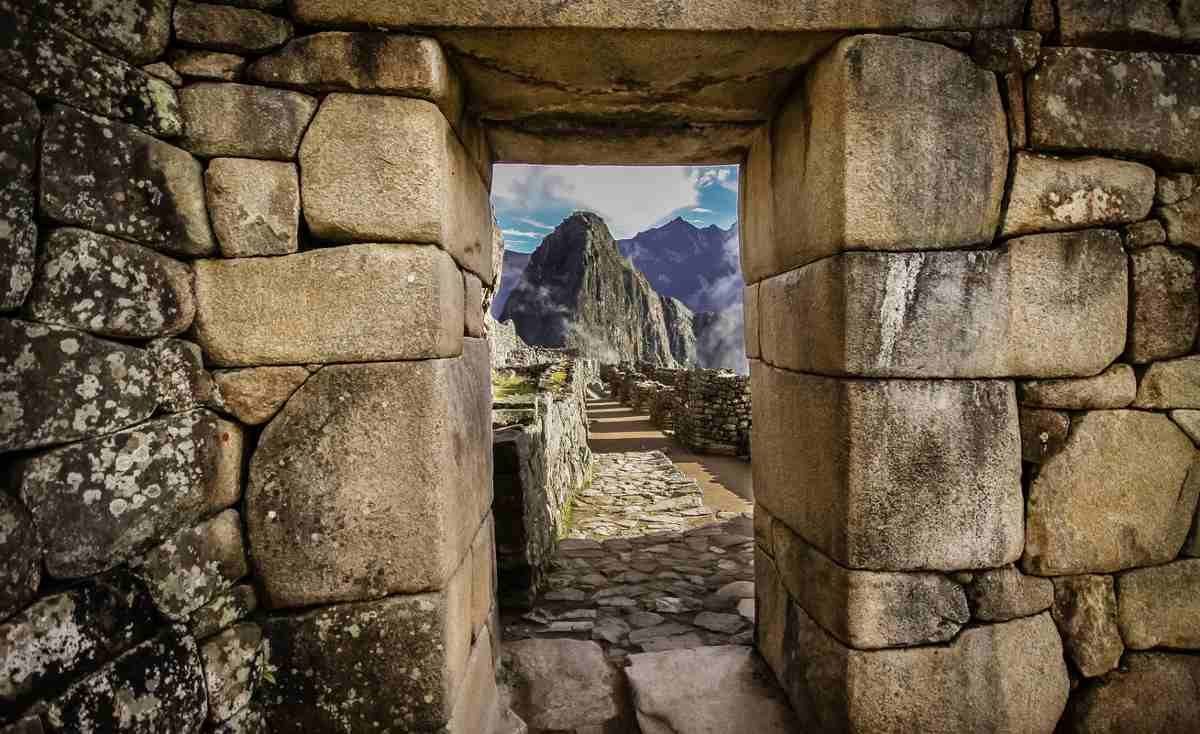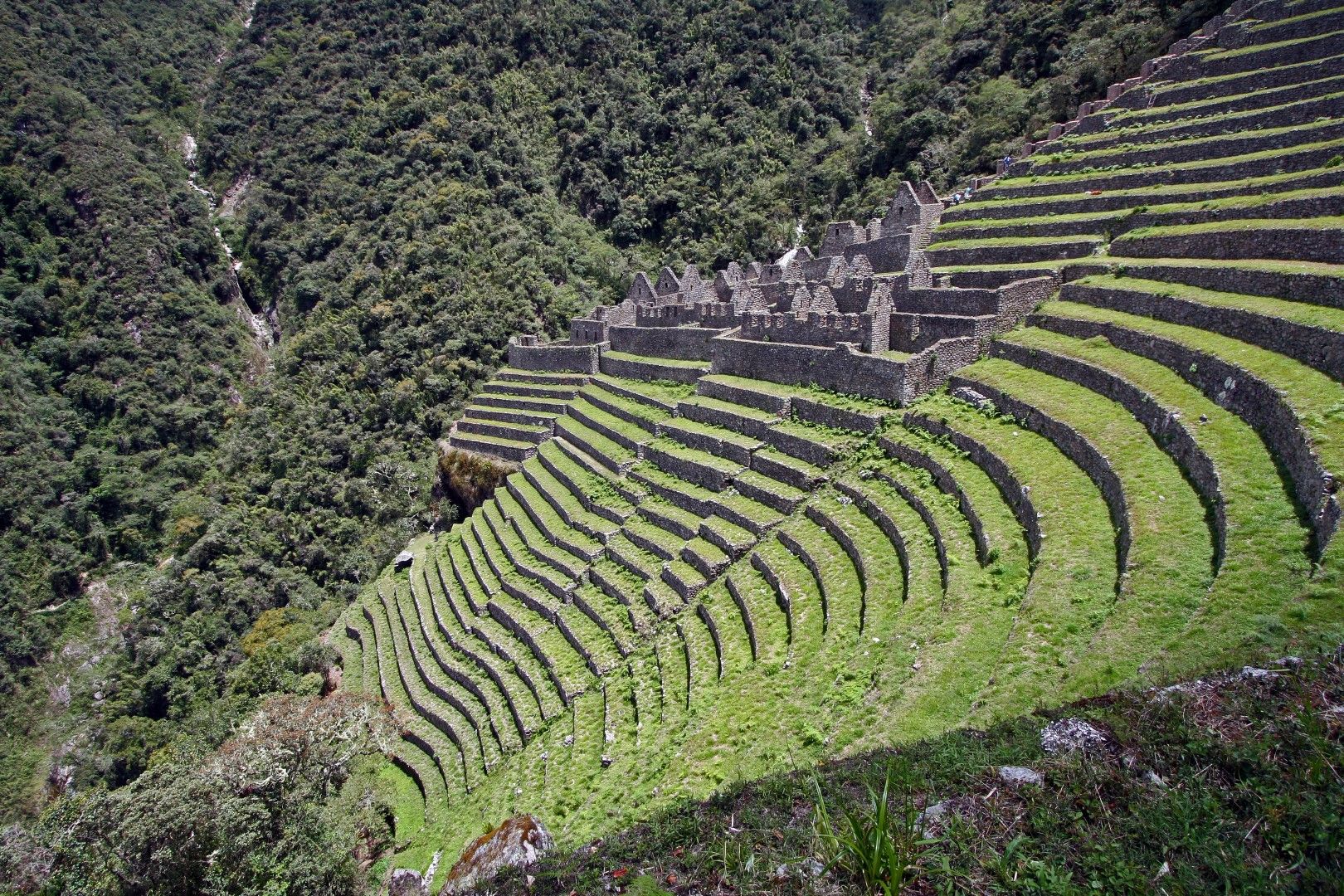Machu Picchu is an Incan citadel, built in the 15th century and set high in the Andes Mountains in Peru, above the Urubamba River valley.
Machu Picchu is an Incan citadel set high in the Andes Mountains in Peru, above the Urubamba River valley. Built in the 15th century and later abandoned, it’s renowned for its sophisticated dry-stone walls that fuse huge blocks without the use of mortar, intriguing buildings that play on astronomical alignments and panoramic views. Its exact former use remains a mystery.
1. Huayna Picchu

Huayna Picchu, Quechua: Wayna Picchu, is a mountain in Peru which the Urubamba River bends. It is located in the Cusco Region, Urubamba Province, Machupicchu District. It rises over Machu Picchu, the so-called lost city of the Incas. The Incas built a trail up the side of the Huayna Picchu and built temples and terraces on its top. The peak of Huayna Picchu is 2,693 meters above sea level, or about 260 meters higher than Machu Picchu. According to local guides, the top of the mountain was the residence for the high priest and the local virgins. Every morning before sunrise, the high priest with a small group would walk to Machu Picchu to signal the coming of the new day.
2. Temple of the Moon

The Temple of the Moon is an Incan ceremonial temple on Huayna Picchu near Machu Picchu, in Peru. The site is made up of stone masonry and an open-face, shallow cave. The temple is arbitrarily named, like many of the sites in Machu Picchu. In the center of the cave is a throne carved out of a rock. Beside the throne are steps that lead deeper into the cave. It is thought that the caves were used to hold mummies. The Temple of the Moon dates back 1500 years. It was rediscovered in 1936. It lies 390 m below the summit on the north side of Huayna Picchu.
3. Inti Punku

Inti Punku or Intipunku is an archaeological site in the Cusco Region of Peru that was once a fortress of the sacred city, Machu Picchu. It is now also the name of the final section of the Incan Trail between the Sun Gate complex and the city of Machu Picchu. It was believed that the steps were a control gate for those who enter and exited the Sanctuary. It is one of the most important archeological constructions around the Machu Picchu site. Inti Punku was once the main entrance to Machu Picchu, in particular, it was the primary approach from the then capital city of Cusco to the southeast.
4. Wiñay Wayna

Wiñay Wayna is an Inca ruin along the Inca Trail to Machu Picchu. It is built into a steep hillside overlooking the Urubamba River. The site consists of upper and lower house complexes connected by a staircase and fountain structures. Above and below the houses the people built areas of agricultural terraces or Andenes, which are still visible. A campsite for hikers with the same name is located in the vicinity and is usually used as the last overnight camping site for hikers undertaking the classical Inca Trail.
5. Sayacmarca

Sayacmarca is an archaeological site in Peru located in the Cusco Region, Urubamba Province, Machupicchu District. It is situated southwest of the archaeological site Runkuraqay and the Runkuraqay pass and southeast of the sites Phuyupatamarka and Qunchamarka. Hiram Bingham III visited the site in April 1915, referring to it as Cedrobamba, or cedar plain.
